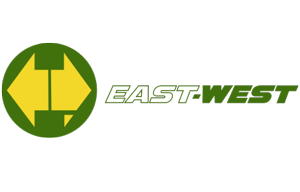
East-West Airlines - Aircraft Fleet:
Background Information.
East-West Airlines was founded in 1947 with funds raised from about 800 mainly small investors with the aim to ‘fight the city based airline monopolies’ and traded forthwith as an unlisted public company. At this early time, the workforce consisted of the manager who was Basil Brown and the maintenance engineer and workshop manager Cedric Wood.
Cedric Wood was an exceptional aircraft engineer having an unblemished maintenance record, despite having nine separate aircraft maintenance licences to his name. This allowed the company to manage its maintenance procedures on a 'shoe string' budget. Initially using single-engine de Havilland Tiger Moth, East-West established Australia's first regular mail delivery service between Tamworth NSW, Port Maquarie and Newcastle. The company then bought a twin-engined war surplus Avro Anson which allowed it to carry more mail and passengers.
East-West acquired several Douglas DC-3s starting in 1953 and these 28-seat aircraft steadily replaced the smaller Avro Ansons in operating scheduled services throughout New South Wales.
The airline grew in the following years from an intrastate operator to Australia's third largest domestic carrier which owned by 1982 ten Fokker Friendship aircraft. By that time East-West was also about to acquire its first jet aircraft. It was however still reeling from a venture into the Northern Territory in 1980, which incurred heavy losses. This caused also a falling out among board members. East-West, already in 1981 in an era still governed by the Two Airlines Policy became the first ‘third’ carrier operating between Sydney and Canberra. Between 1977 and 1990 it operated services to Norfolk Island.
In 1982 the former Ansett and Air Niugini executive Bryan Grey, in partnership with former Citicorp Australia merchant banking executive Duke Minks, formed the company ‘East-West Development Pty Ltd’ with the specific purpose to acquire East-West Airlines. With a loan of $AUD 8.5 million from the Nauru Phosphate Royalties Trust they purchased East-West in a share buy-out. The take over was deemed controversial, as discussions queried how far the involvement of the Nauruan capital constituted quasi a foreign takeover.
In the following years East-West competed vigorously with major airlines Ansett Airlines and Trans-Australia Airlines on inter-capital routes. The Australian aviation industry was highly regulated at the time under the Two Airlines Policy, which prevented East-West from flying directly between major capital cities, It overcame this hurdle by offering services between the major cities via regional centres. Routes included Melbourne to Sydney via Albury and Sydney to Brisbane via Newcastle and Coolangatta. Often these landings at the intermediate locations involved the aircraft touching down, back-tracking along the runway and taking-off again.
In June 1983 East-West sold return tickets between Sydney and Melbourne via Albury, which took about two hours 45 minutes, for $AUD 120.00 which was about half of the standard fare of $AUD 248.00 for direct flights by the duopoly carriers taking one hour 15 minutes. However Ansett and Trans-Australia Airlines also offered discounted fares down to around $AUD 140.00. According to Brian Grey the service attracted about 4,000 customers per month.
Because of its operating structure, East-West was able to significantly undercut other airlines. East West Airlines' aggressive ‘Third Airline’ campaign forced the Australian Government to eventually scrap the Two Airline Policy, which had kept Australian air fares seemingly inflated for many years.
Managing Director Bryan Grey along with marketing consultant John Williams created a massive nationwide media campaign and thus attracted many first-time flyers with what could be described as Australia's first truly discounted fares in a now deregulated arena. East-West set the scene for other airlines to enter the Australian domestic market years later. In December 1983 East-West was sold for between $AUD 20 to $AUD 30 million according to estimates, to Perth based Skywest Airlines which was owned by Ric Stowe. In particular the New South Wales Government opposed the deal. Bryan Grey then formed Compass Airlines in 1990 as the first entrant into a then-deregulated domestic aviation market.
Under the new ownership East-West was retained as an independent entity. Skywest Holdings announced in May 1985 that it planned to merge both Skywest Airlines and East-West, but this was not carried out except for some harmonisation of timetables. In 1985 East-West challenged the Two Airline Policy in the Federal Court.
In July 1987 East-West and Skywest were sold to Perth car dealer the Perron Group which then sold them on by the end of the month to Bodas Pty Ltd, a company set up by Ansett's owners, TNT (Sir Peter Abeles) and News Corporation (Rupert Murdoch) for a reported $AUD 150 million. It continued to operate as a separate entity until October 31, 1993 when its operations were integrated with those of Ansett and the East-West name ceased to be used.